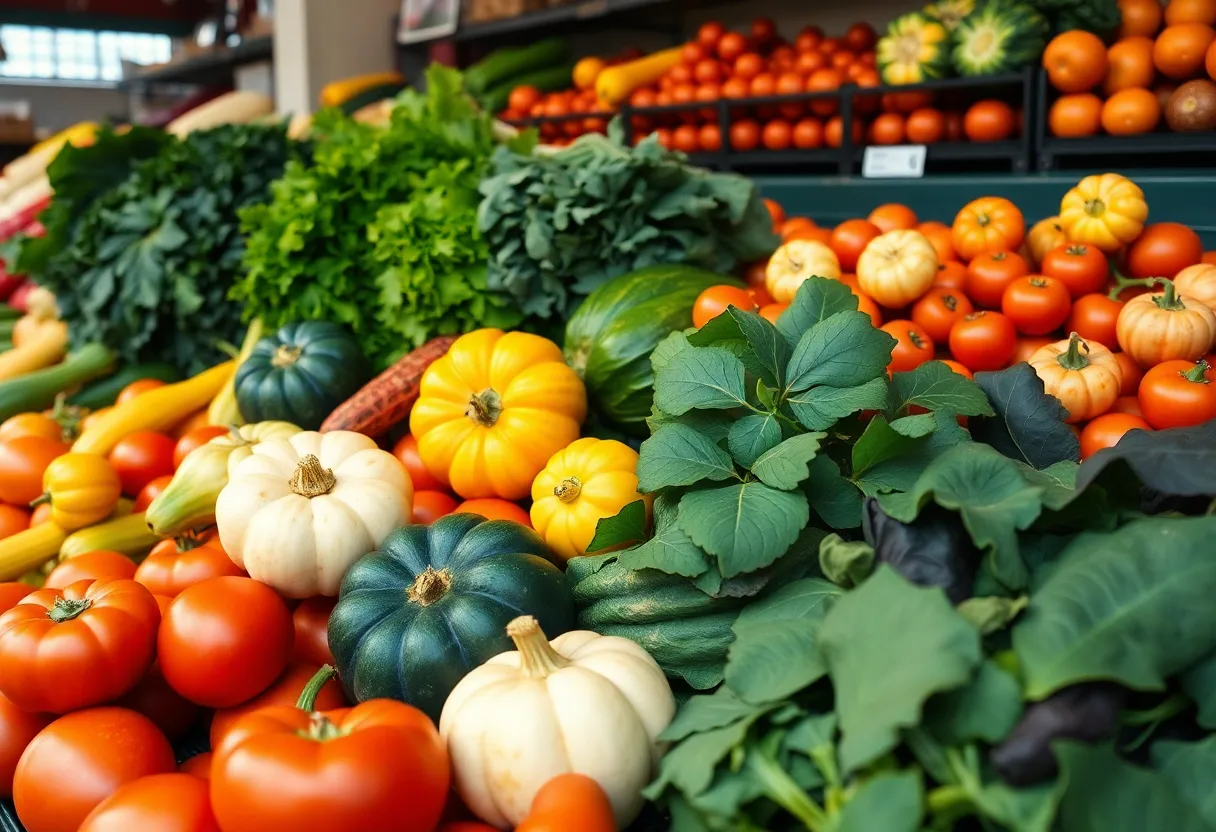Boston, August 19, 2025
News Summary
Boston area produce distributors have reported a significant recovery in sales this summer, following a slow winter and spring. The rebound began in June and returned to normal levels by August as warmer weather encouraged consumer outings. Foodservice demand, heavily impacted by prior cold temperatures, regained strength with top products like squashes and leafy greens seeing increased turnover. Local sourcing and investments in operations are helping wholesalers adapt to consumer preferences for quality and sustainability.
Boston
Boston area produce distributors report a clear rebound this summer after a slow winter and spring, with sales recovering in June and returning to normal levels by August. The slow start was linked to three consecutive months of below-normal temperatures that reduced consumer outings and sharply affected foodservice demand, which is a major sales channel for several local wholesalers.
Key recovery and current status
Wholesale companies at the New England Produce Center say summer business has improved. One large distributor indicated that foodservice accounted for roughly 70% of its business and suffered most during the cold months. Despite abundant supplies from Florida and Mexico, lower local demand in Boston kept inventories higher than usual. By mid-summer, demand rose again, pushing top-selling items such as several types of squashes, peppers, cucumbers, tomatoes, and leafy greens back to normal turnover rates.
Supply and sourcing patterns
Distributors report that favorable growing weather in Florida and Mexico helped ensure an ample supply of fresh produce through the slow period. For the summer season, many companies prioritized local growers for row crops and tomatoes to match consumer interest in fresh, locally sourced items. Some wholesalers also emphasized Canadian sources for staple vegetables including broccoli, celery, carrots, and potatoes to maintain volume and consistent quality.
Business conditions among local wholesalers
Overall trade figures vary by firm. One company described business as steady year-over-year but noted a continued desire for increased foot traffic, which remains below pre-pandemic levels. Tropical fruit lines, including active sales of mangoes, cactus pears, and limes, remain important for certain distributors. Organic options such as organic bananas and pineapple are stocked to meet growing consumer demand.
Market trends and customer preferences
Distributors and wholesalers report several persistent market trends shaping purchasing and stocking decisions in Boston:
- Higher demand for quality: Retail shoppers increasingly prioritize high-quality produce and are often willing to pay a premium.
- Local and sustainable options: Interest in locally grown and sustainably produced items continues to influence sourcing choices.
- Diverse and global flavors: Boston’s foodservice market shows rising interest in global flavors, ethnic staples, and plant-based dishes.
- Convenience and value-added products: Pre-cut and ready-to-use produce options are growing in popularity among both retailers and restaurants.
Operational changes and investments
Companies at the produce center have been making facility and service upgrades. Examples include relaunching product listing on company websites to improve customer access, replacing refrigeration units, completing third-party food safety audits, and hiring new staff focused on operations and business growth. These moves aim to shorten supply chains, improve logistics, and provide tailored services that ensure product availability and freshness.
Shifts in retail landscape
Smaller independent stores, especially ethnic markets, are performing well and expanding in the Boston area, with an increase in Southeast Asian markets reported. Wholesalers say they are adapting by sourcing unique and specialized products to serve these independent grocers and restaurants that demand diverse assortments.
Outlook
Industry leaders expect continued growth through the remainder of the year if summer demand holds and logistical improvements persist. The combination of consumer preference for quality, interest in local and organic items, and demand for convenience products creates opportunities for distributors that can provide reliable volume, quality, and tailored service.
FAQ
Why did Boston’s produce sales slow during winter and spring?
Sales slowed after three months of below-normal temperatures, which reduced consumer outings and hit the foodservice sector—responsible for a large share of distributor sales—particularly hard.
When did sales begin to recover?
Sales began improving in June and returned to typical levels by August as warmer weather and increased dining activity boosted demand.
Which products sold best during the recovery?
Top sellers included various squashes, peppers, cucumbers, tomatoes, and leafy greens, along with steady demand for tropical fruits and some organic items.
How are wholesalers adapting to changing market needs?
Wholesalers are shortening supply chains, offering tailored logistical services, sourcing unique and local items, investing in facility upgrades, and expanding product listings to better serve retailers and restaurants.
Quick Reference: Distributor Details and Trends
| Topic | Details |
|---|---|
| Primary Cause of Slowdown | Three months of below-normal temperatures reduced outings and foodservice demand |
| Recovery Timeline | Sales improved in June; returned to normal by August |
| Major Sales Channel | Foodservice (about 70% for one large distributor) |
| Top Summer Products | Squashes, peppers, cucumbers, tomatoes, leafy greens, tropical fruits |
| Sourcing Notes | Local summer row crops and tomatoes; imports from Florida, Mexico, and Canada for volume and variety |
| Retail Trends | Demand for high-quality, local, organic, and value-added/pre-cut produce |
| Operational Actions | Website updates, refrigeration upgrades, food safety audits, staffing and facility renovations |
| Opportunities | Supplying unique, ethnic, and plant-based items to independent grocers and restaurants |
Deeper Dive: News & Info About This Topic
HERE Resources
Boston City Council Proposes Regional Fund for Mass. and Cass Crises
Boston Celebrates Cinematic Legacy with Movie Bracket
Investigation of Suspected Botulism Cases Linked to Botox in Massachusetts
Boston Weather Forecast: Variable Conditions Ahead
Additional Resources
- The Packer: Boston Summer Business Builds Momentum
- Produce Business: Meeting Boston’s Dynamic Produce Market Needs
- Business Wire: Wolverine Worldwide Opens Boston Innovation Hub
- Boston Globe: Massachusetts Housing Affordability
- Produce Business: Boston’s Population Opportune for Produce
- Wikipedia: Boston
- Google Search: Boston produce market
- Google Scholar: Boston produce wholesale
- Encyclopedia Britannica: Boston
- Google News: Boston produce industry

Author: STAFF HERE BOSTON WRITER
The BOSTON STAFF WRITER represents the experienced team at HEREBoston.com, your go-to source for actionable local news and information in Boston, Suffolk County, and beyond. Specializing in "news you can use," we cover essential topics like product reviews for personal and business needs, local business directories, politics, real estate trends, neighborhood insights, and state news affecting the area—with deep expertise drawn from years of dedicated reporting and strong community input, including local press releases and business updates. We deliver top reporting on high-value events such as Boston Marathon, Head of the Charles Regatta, and Boston Harborfest. Our coverage extends to key organizations like the Greater Boston Chamber of Commerce and Associated Industries of Massachusetts, plus leading businesses in finance, biotech, and insurance that power the local economy such as Fidelity Investments, Biogen, and Liberty Mutual Insurance. As part of the broader HERE network, we provide comprehensive, credible insights into Massachusetts's dynamic landscape.





